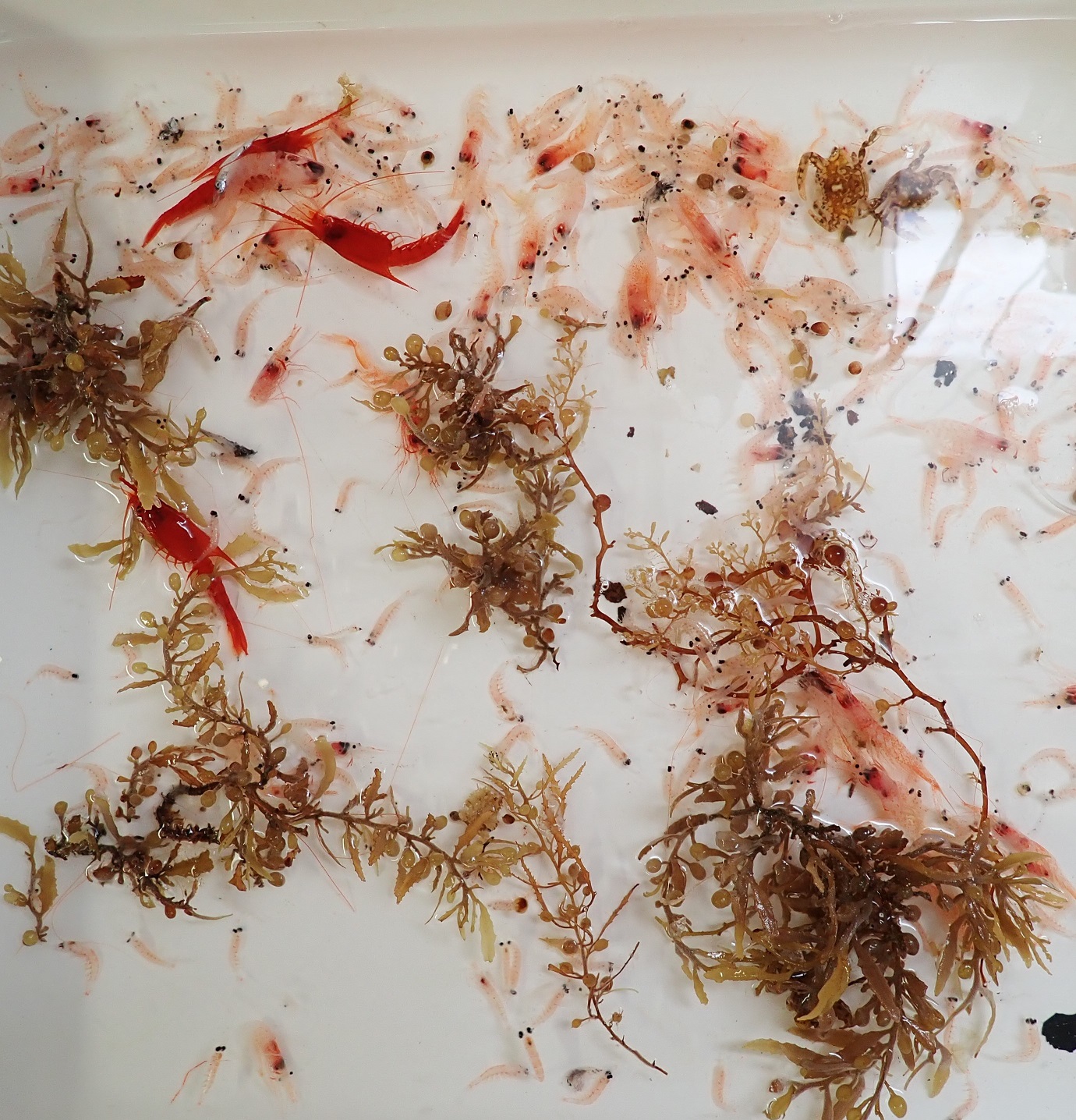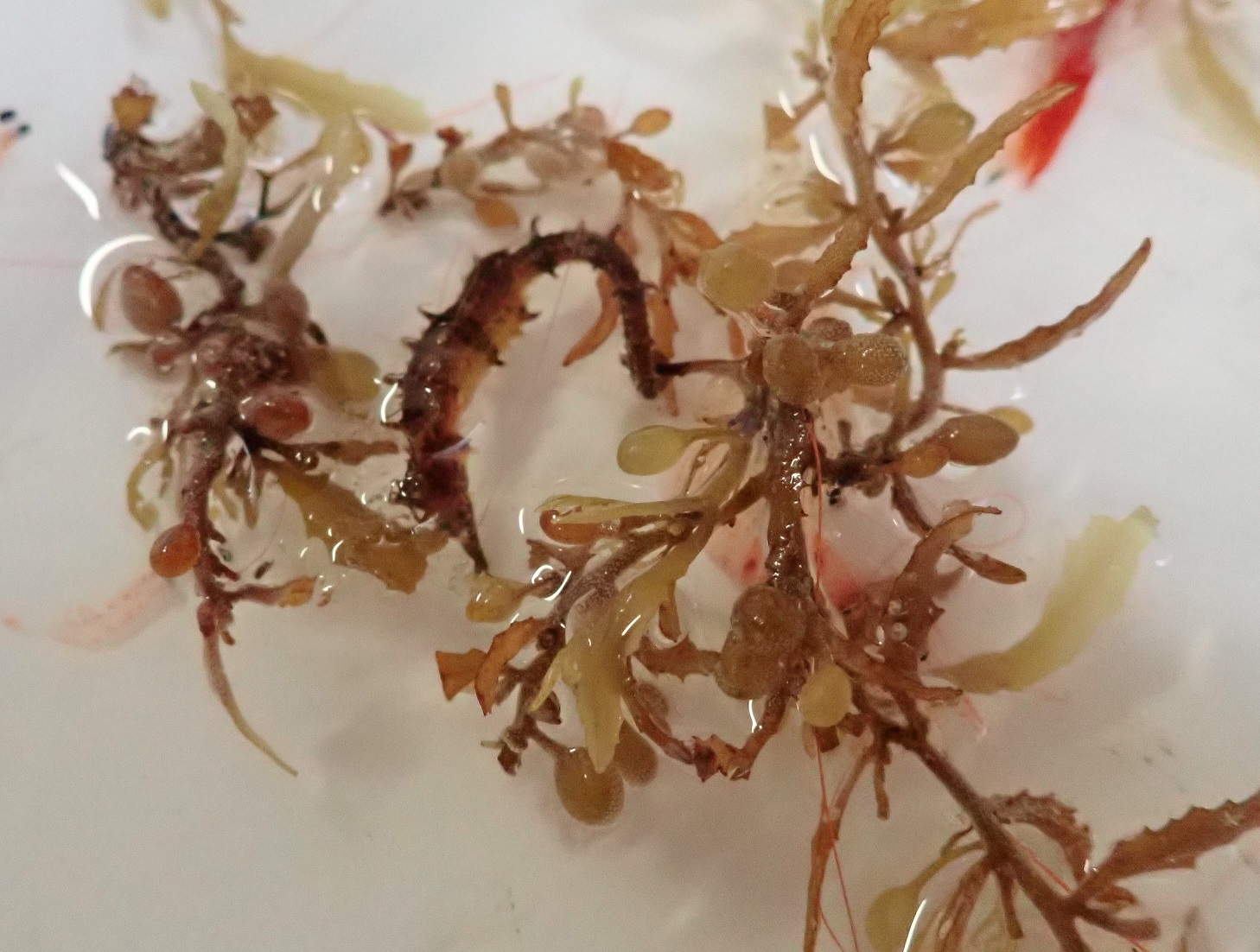Dec. 9, 2020 Among the Sargassum by Hannah Blair, PhD Student, Stony Brook University
Hello! I’m Hannah Blair, part of the night shift side of the science crew on this fifth ADEON cruise. Last night we conducted our first zooplankton net tows of the trip, just off Cape Hatteras. This is my fourth ADEON cruise, so we have the routine down pretty well, but each time, I still get excited by the prospect of what organisms we might catch. Looking over the sides of the ship as we sent out the nets this time, I could already guess one thing we’d be pulling in: sargassum (a type of seaweed).
Sargassum is a macroalgae extremely common to this region of the Atlantic Ocean. In fact, this seaweed was named after it – the Sargasso Sea sits at the center of a circulating current system that forms the North Atlantic Gyre. This current system includes the Gulf Stream on the western border, where we currently sit. Sargassum makes its own gas-filled bladders and forms floating mats throughout the Sargasso Sea that can provide habitat for several animal species. So when our net came up, not only did we get sargassum, but also a few of the species that live in it.

We usually only catch crabs in their larval stages, since as adults most species of crabs live closer to the sea floor. The sargassum swimming crab (Portunus sayi) is one of the few that lives in the open ocean even as adults, hunting prey among the sargassum. Their golden-brown coloration gives them excellent camouflage, and the sargassum can also provide a place to rest.

Seahorses are a rare occurrence in our nets. Like the crabs, these fish are well-adapted to living among the sargassum, imitating part of the seaweed by hanging onto it with their dexterous tails. Sargassum can be annoying to catch, because it acts like velcro to the more delicate organisms and is a pain to carefully clean off. But catching the cool critters that make sargassum their home makes it a little more worth the hassle.


